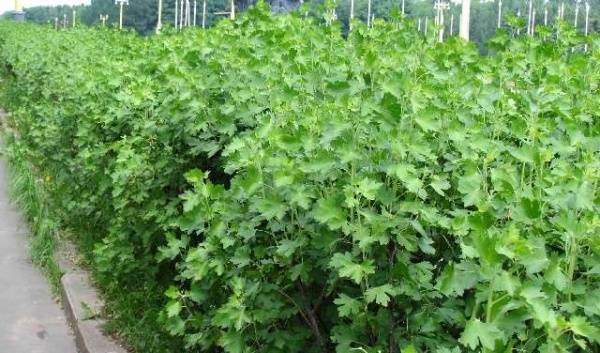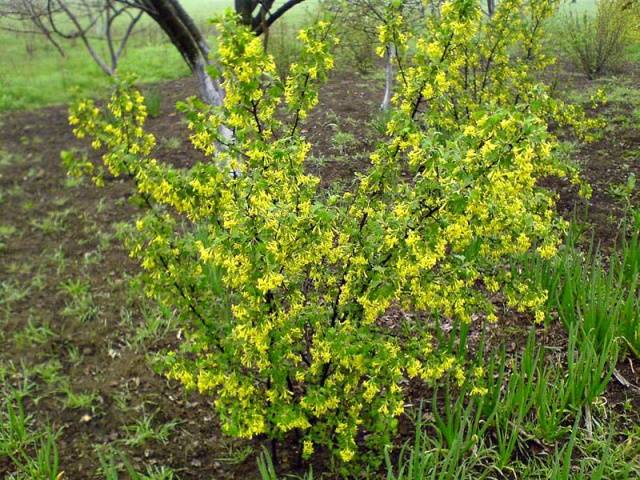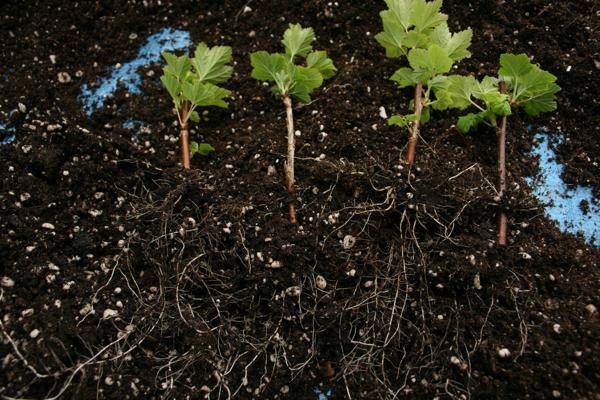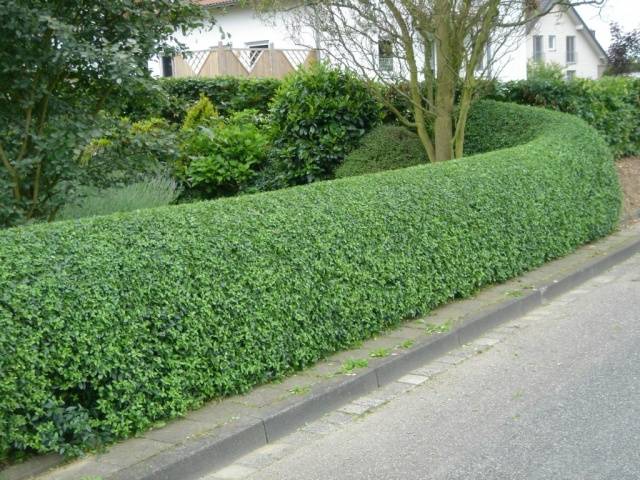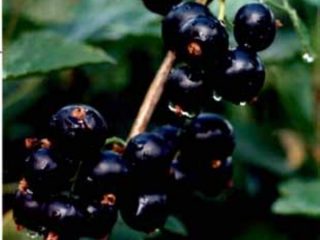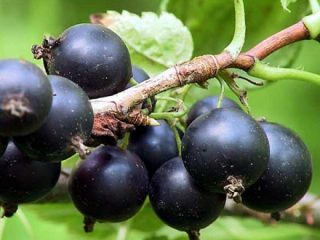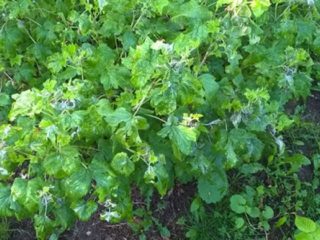Alpine currant is a deciduous shrub that belongs to the genus Currant of the Gooseberry family. Used in landscape design to create hedges, figured sculptures, to decorate private and public areas.
Description
The Latin name for alpine currant is Ribes alpinum. It is a slow-growing shrub with an annual growth of about 10-15 cm. It reaches its final height in 10-20 years. It has deep roots, sensitive to soil density. Alpine currant does not belong to light-loving plants, it grows best in partial shade or in the shade. Grows well in a sunny place in moist soil.
Description of alpine currant and its photo:
- shrub about 1-2 m in height and width;
- branches are straight, elastic, dense, compactly located;
- leaflets are small, up to 4 cm long, frequent, three-lobed, single-toothed along the edge, dark green;
- the surface of the leaves is shiny, covered with glandular bristles;
- their reverse side is smooth, light in color;
- flowers are greenish-yellow;
- pedicels also with glandular bristles;
- racemose inflorescences, include from 15 to 30 male and 1-5 female flowers;
- fruits - berries from 6 to 8 mm in diameter, pink, have a mealy flavor.
Alpine currant blooms in May for 1.5-2 weeks, berries ripen in July-August. They stay on the bush for a long time, up to frost. They are very decorative against the backdrop of green foliage and are quite edible, but not very tasty. However, they are sometimes used for juicing along with other berries or added to fruit preparations. The age of fruiting branches of this species of currant is 5-6 years, therefore they are then cut off and replaced with new ones.
Alpine currant is very decorative. She can decorate the site throughout the warm season. In summer it is green, in autumn its leaves turn golden-green or ocher-green, which gives the plant a particularly elegant look.
Varieties
Alpine currant has been known as an ornamental plant since the end of the 16th century. Since that time, many garden forms have been bred: classic, decorative with yellow and red leaves, dwarf... In Russia, the most common variety is the Schmidt alpine currant. It is a winter-hardy, shade-tolerant, drought- and wind-resistant and very durable variety - the plant can live up to 40 years. Great for landscaping cities, as it feels good on gas-polluted streets and near tall trees.
Alpine currant Schmidt does not differ in demanding soil, but prefers well-drained, loose and nutritious loams and sandy loams with a high humus content. The reaction of the soil is neutral or slightly acidic. At the same time, on too fertile soils, the currant loses the compactness of the bush. Does not tolerate waterlogging, on soils with stagnant moisture, it is affected by fungal diseases and dies off.
What the Schmidt currant looks like can be seen in this video:
The next variety of alpine currant, which is popular - Golden (Aureum). This is a dwarf form, the height of its bush does not exceed 1 m. It is unpretentious to growing conditions and is resistant to diseases, but differs from the previous form in that it cannot stand shading. She has young leaves of golden color, but this currant is especially decorative during flowering, when the plant is covered with a mass of pale yellow inflorescences.
Another type of alpine currant - form Pumilum (Pumila). Plants are low, no more than 1.5 m, dense and have a spherical crown up to 0.6 m in diameter. The shoots are curved, covered with small carved decorative leaves. Pumila currant is winter-hardy, characterized by high rooting rate of cuttings. It begins to bloom only from the age of 5.
Finally, cultural Laciniata form... Its bushes are tall, the leaves are cut-toothed. This currant demonstrates excellent rooting of cuttings.
Landing
Alpine currants are propagated by seeds, layering or cuttings. Of all three, it is easiest to propagate it by cuttings. To do this, in early spring, even before bud break, woody shoots of the last year or basal processes about 20 cm long are cut from the bushes. Root them in a loose lightweight substrate in greenhouses or in containers. The optimal composition of the soil for this plant is a mixture of humus, sand and sod soil in a ratio of 1 to 1. In the fall, the bushes are cut off and planted in a permanent place.
For propagation of currants by seeds, they are sown in spring or autumn. Before this, the seeds are stratified. Sow them in open ground on a separate bed. The seeding depth is 0.5 cm. After sowing, the soil surface is sprinkled with a thin layer of peat. With good care, the seedlings become suitable for planting as early as next spring. To create layering, 2-year-old shoots are chosen, they are added dropwise, and when they take root, they are separated from the bush and transplanted to a new place.
You can plant seedlings from March until late autumn, even in summer. Container-grown seedlings are best suited for this purpose. They quickly take root and adapt to a new place, since their roots are not damaged.
Plants of currant are placed in ordinary plantings at a distance of 2-2.5 m, and in order to create a hedge - at a distance of 1.5-1 m from each other. Before planting, humus is introduced into the pits in the amount of 1-2 buckets, 20-30 g of potassium salt and 150-200 g of superphosphate. The seedlings are examined, broken or diseased branches are cut off, healthy ones are shortened by 1/3, too long and bare roots are also cut off, the remaining ones are dipped in a clay chatterbox or powdered with Kornevin. After that, the plants are buried into the soil 5-7 cm below the root collar, watered with 1-2 buckets of water, and the earth is compacted. It is recommended to place the seedling at an angle of 45 ° C - this way it grows better.
How to plant currants can be seen in this video:
Care
After planting alpine currants, caring for it consists in watering, fertilizing, loosening the soil, shaping, and protecting against diseases. Bushes are often watered before they take root, young ones - moderately or rarely (depending on the weather), adults do not need to water. While the plants are growing, the ground around them is weeded, removing weeds... When the currants grow, weeding is no longer required. They are fed in early spring and autumn, adding humus, manure and ash under each bush. Then the earth is loosened. Complex mineral fertilizers are applied in April and at the end of flowering.
Cut off the bushes in the spring, before the start of sap flow, removing all old or affected by diseases and pests, twigs, as well as those that thicken the bush. They are cut out to the very base. Then the branches are aligned in height and the bush is given the desired shape. Large cuts can be sprinkled with ash, garden varnish or paint can be applied to them. If necessary, additional shaping is carried out in the summer, removing excess green mass.
Alpine currants can be affected by rust, terry, spotting, aphids, sawflies, scale insects and spider mites can attack it. They are destroyed by fungicides and insecticides. For the prevention of fungal diseases, the bushes are sprayed with Fitosporin, tobacco and soap solutions.
It is recommended to cover the stems of young plants in the first 2-3 years of their life for the winter to protect them from frost damage. To do this, currant trunks are wrapped in 1-2 layers with burlap.
Use in landscape design
In landscape design, Schmidt's alpine currant is used to form neat hedges, but it also looks good in group plantings on lawns, and can decorate any other area, for example, an orchard. Schmidt's currant lends itself well to shearing and quickly overgrows with leaves, it is possible to form both simple geometric shapes and topiary from it.
Because of this, other cultures can suffer if they are placed too close. This rule does not apply to currants grown as a tapeworm or as part of group compositions.
Conclusion
Alpine currant is a valuable shrub that is used today in landscape design to create hedges and decorate plots. It looks great in almost any type of plantation, single or group. The main advantages of this currant are considered to be tall, dense branches, bright carved foliage, and in summer and autumn - golden inflorescences and red fruits contrasting with foliage. This ornamental plant does not require special care, so even an inexperienced gardener can cope with its cultivation.
